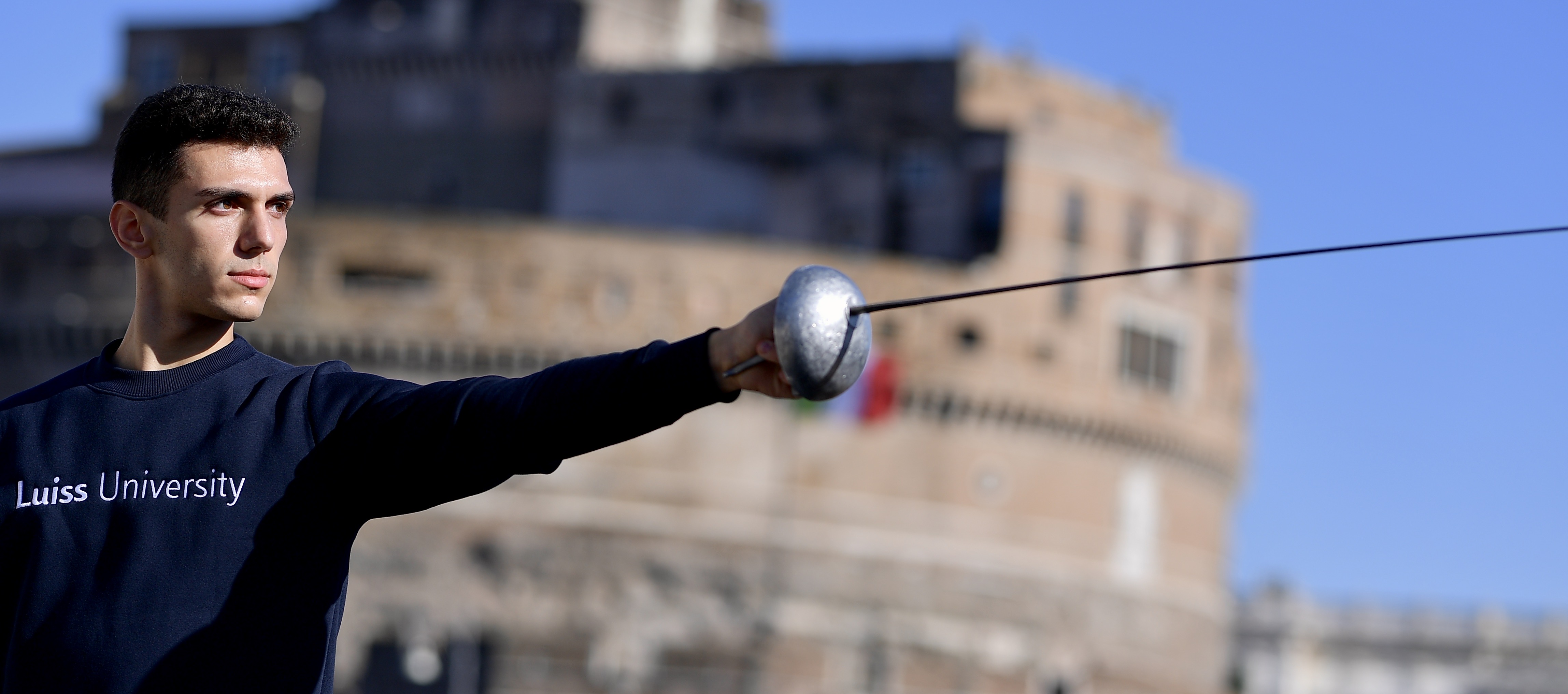From the platform to the ballroom: Davide Di Veroli tells his story for #ASLuissFreeTime
Fencing and ballet are similar in some ways, Davide Di Veroli says. Carrying them on with the dedication of our Top Athlete, however, is not at all easy. As a child, even before starting the sporting career that would have made him one of the young promises of Italian fencing, Davide entered the hall with his brothers. This was the beginning of a passion that led him to attend the Liceo Coreutico and to feel at ease both during an assault on the piste and when performing an entrelacé on a stage.
Davide, how did you approach dance? What were your inspirations?
I started practicing it when I was little, with my sister and brother. We started a bit for fun, but over time it became a real passion. The first dancer I met was Roberto Bolle: I admire him a lot, I like his simplicity, I consider him a positive role model. At the Liceo Coreutico I had a classmate who had worked for a year at La Scala and one evening he danced with him, acting as a figure behind him during a solo. He told me that he is a very quiet person who is always questioning himself.
Coming from an individual sport, do you prefer to dance alone or do you also enjoy chorus?
I am now a professional fencer, but in the past I have played team sports, such as soccer and water polo. Even in fencing I really like team competitions and collective training. I like the complicity between teammates in sports, a predilection that I also discovered through dance.
Was there a decisive episode in this sense?
Yes, an end-of-year recital: when I was a kid, I wasn’t always happy to take classes in the hall. Sometimes I felt like I was losing an hour and a half of my day. But then, when I was 13, we prepared for the annual essay and that’s when the spark went off. The behind-the-scenes and experience of preparing for the show ignited something in me. We helped each other and it was beautiful. The next year I couldn’t wait to get back in the room.
Does playing an Individual sport and then dancing in a group allow you to more fully express your personality?
Definitely. I am comfortable sharing space, time, and goals with other people. When you dance alone you play a single character, in a group there are more facets within the same representation. I find choral choreography, performed by dancers and ballerinas, more complete. I really like the contrast between the ethereal and delicate dance of the girls and the more physical and dynamic dance of the boys.
Can you tell us about your experience at Liceo Coreutico?
I enrolled there because at the gym I had had a dance teacher who taught there. She introduced me to this school, which wasn’t very well known at the time. In fact, when I took the admission test, it had only been in existence for four years. In the middle of eighth grade, I took the entrance test for both the Liceo Coreutico and the Liceo Sportivo and was admitted to both. Choosing the Liceo Sportivo, however, I would have had to leave dance because of the commitments required by fencing, while thanks to the Coreutico I was able to pursue both passions.
Does dance help you in your relationship with studies and sports?
Everything I do outside of sports is an outlet for me. I am convinced that the more you do, the better. Having more points of view, it helps to live everything in a calmer way.
Have you been able to practice dance during this particular year?
Unfortunately not, it’s been a long time since I’ve practiced. Since the pandemic exploded, the professor decided not to do lessons at a distance, because to train well you need to have a certain floor, precise conditions. Now I would like to start again, but it is not possible because the gym is closed. I’m waiting for the situation to calm down and for the regulations to allow me to resume. When that happens, I’ll be the first one in the room.
In your opinion, are there any similarities between fencing and dance?
Yes, there are many similarities, especially in positions and movements. For example, between the fourth position and the guard. During exercises, the dance teacher would often associate steps with fencing movements. In the same way, on the piste I found similar movements to the steps I practiced in the hall. From my point of view, they are very complementary and dance has helped me so much to develop elasticity, fluidity and coordination of my limbs.
What is your favorite dance step? Tell our readers how to perform it and challenge them to do it better than you!
I’ve always loved the entrelacé, a step that involves a running jump, followed by a chop and a spin in the air. You have to throw your arms as soon as possible to jump very high and immediately rotate your torso in the air, throwing your leg behind to make the step more scenic. It should be performed in an explosive manner, also because the dynamism helps to cover technical smears and positioning errors.
Are you ready to perform an entrelacé? After the explanation of an exceptional master like Davide, you can’t help but try. Let us see your performances on Instagram: mention @sportluiss and use the hashtag #ASLuissFreeTime!


